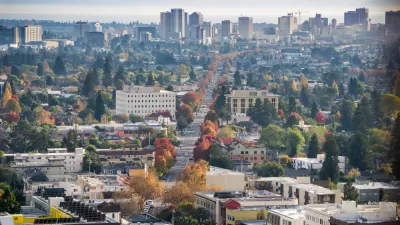So much for the conventional wisdom that world population would peak at 9 billion by 2050 and then decline. A new analysis shatters it, concluding population will rise to 11 or 12 billion by 2100, and possibly continue growing.

"A ground-breaking analysis released (Sept. 18) shows there is a 70% chance that the number of people on the planet will rise continuously from 7bn today to 11bn in 2100," writes Damian Carrington of The Guardian. It is published in the journal Science.
(T)he new research narrows the future range to between 9.6bn and 12.3bn by 2100. This greatly increased certainty – 80% – allowed the researchers to be confident that global population would not peak any time during in the 21st century.
Prof. Adrian Raftery at the University of Washington led the international research team that included UN experts, writes Carrington, though Sci-News states that the "researchers were led by Dr. John Wilmoth [formerly of UC Berkeley] of the U.N. Department of Economic and Social Affairs' [Population Division].
Co-author Wilmoth penned a letter to the editor of The Wall Street Journal in response to an opinion in that paper that questioned the team's findings.
Wired.com notes that Raftery's team "analyzed new data provided by the United Nations on national trends in fertility, mortality, migration and age patterns."
Carrington points to at least two reasons for the increased projections:
- A previously projected decrease in fertility in sub-Saharan Africa that failed to materialize, resulting in it being "by far the fastest growing region, with population rocketing from 1bn today to between 3.5bn and 5bn in 2100."
- "Another key factor included for the first time was new data on the HIV/AIDS epidemic showing it is not claiming as many lives as once anticipated," writes Carrington. “Twenty years ago the impact on population was absolutely gigantic,” Raftery said. “Now the accessibility of antiretroviral drugs is much greater and the epidemic appeared to have passed its peak and was not quite as bad as was feared.”
However, there are skeptics on this report, as noted in The Economist, which states that the "UN study sparks fears of a population explosion. The alarm is misplaced." However, they go on to confirm the findings of the report—they just indicate that the findings have already been made and question some of the more sensational reporting such as found in Wired.com.
This projection is not new. It was first made by the UN itself in its 2012 estimates. (Before that, the UN had projected a population of 9.3 billion for 2050.) The Science study confirms, rather than changes it. The UN (and many other demographers) have already stopped projecting a peak population of 9 billion.
The new study refines the UN’s current projections and provides a lot of useful material. But population forecasts for 2100 should not be taken literally.
FULL STORY: World population to hit 11bn in 2100 – with 70% chance of continuous rise

Planetizen Federal Action Tracker
A weekly monitor of how Trump’s orders and actions are impacting planners and planning in America.

Canada vs. Kamala: Whose Liberal Housing Platform Comes Out on Top?
As Canada votes for a new Prime Minister, what can America learn from the leading liberal candidate of its neighbor to the north?

The Five Most-Changed American Cities
A ranking of population change, home values, and jobs highlights the nation’s most dynamic and most stagnant regions.

San Diego Adopts First Mobility Master Plan
The plan provides a comprehensive framework for making San Diego’s transportation network more multimodal, accessible, and sustainable.

Housing, Supportive Service Providers Brace for Federal Cuts
Organizations that provide housing assistance are tightening their purse strings and making plans for maintaining operations if federal funding dries up.

Op-Ed: Why an Effective Passenger Rail Network Needs Government Involvement
An outdated rail network that privileges freight won’t be fixed by privatizing Amtrak.
Urban Design for Planners 1: Software Tools
This six-course series explores essential urban design concepts using open source software and equips planners with the tools they need to participate fully in the urban design process.
Planning for Universal Design
Learn the tools for implementing Universal Design in planning regulations.
New York City School Construction Authority
Village of Glen Ellyn
Central Transportation Planning Staff/Boston Region MPO
Institute for Housing and Urban Development Studies (IHS)
City of Grandview
Harvard GSD Executive Education
Regional Transportation Commission of Southern Nevada
Toledo-Lucas County Plan Commissions




























